Virtual reality has long been a dream of gamers everywhere. The next level of immersion into a fictional world will bring players themselves into the game, instead of simply showing it on a screen. The idea of being ‘plugged in’ to a different reality has been used in fictional films like The Matrix and TV shows like Fringe, but that’s all these realities have been – fiction.
Until now.
For the past few years, virtual reality projects have been popping up and growing in complexity and immersion. There are a few different ideas about how it should be done; here we will take a look at some of the most well-known virtual reality projects.

One of the first major virtual reality projects, the Oculus Rift is arguably the most recognizable name in the industry so far. Originally announced in August 2012, the Oculus Rift started as a Kickstarter campaign that raised $2.4 million. In June 2015, Facebook bought the Oculus VR company for $2 billion. Oculus Rift devices have been seen at numerous gaming and technology expos, such as PAX, E3 and SXSW, as development kit platforms for many indie games. The Oculus Rift Development Kit has went through 2 iterations and has been used for development for the past 3 years.
The Oculus Rift boasts a 1080×1200 resolution per eye, a 90Hz refresh rate, and a 100 degree field of vision.The consumer edition of the device is approaching its release in Q1 2016.
Initially, it was little more than a virtual reality development kit exclusive to developers and game studios. The company had been distributing Development Kits since its Kickstarter campaign. Today, the Oculus Rift is preparing for its consumer launch, and some preorders have already been shipped.
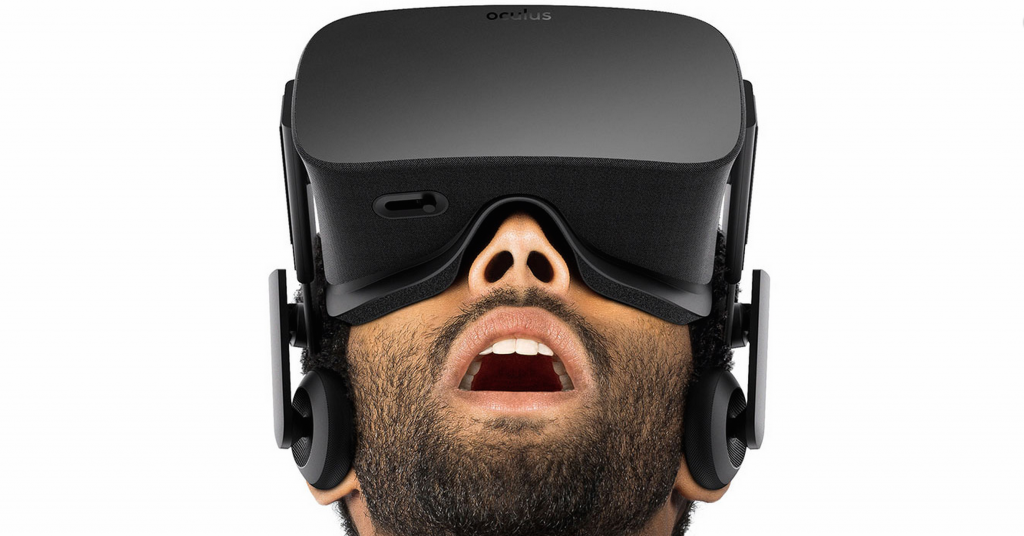
The Oculus Rift is generally considered the most premium of current VR projects. The manufacturing process for the Rift involves hundreds of custom parts and tracking sensors. The project has been praised for being one of the most sleek and seamless VR devices, and is also notable in its progress in one of the biggest challenges in the VR industry today: VR interaction.
We are a long way away from virtual reality experiences that would allow the user to naturally move in or touch something in the environment. Many other projects either leave the user stationary and only able to look around; some, including the Oculus Rift, allow users to move using a gamepad. Oculus, however, has also made progress of their own in VR interaction. The Oculus Touch is a pair of ergonomic controllers featuring buttons, joysticks, and triggers that also track hand movement. The Oculus Touch compliments the Oculus Rift and is currently available for developers.

The Oculus Rift will need to be run by a very powerful computer, since it is so graphically intensive. Their website recommends a machine with:
- CPU: Intel i5-4590 equivalent or greater
- GPU: GTX 970 / AMD 290 equivalent or greater
- RAM: 8GB+
- OS: Windows 7 or newer
- 2x USB 3.0 ports
- 1x HDMI 1.3 video output
Dell, Alienware, and ASUS have already announced lines of Oculus-ready high performance PC towers, starting at around $950-$1000.
The Oculus Rift Consumer Edition is scheduled to hit the market in Q1 2016. It will cost $350, and include removable headphones (allowing the user to use their own headphones), an Xbox One for Windows controller, the Oculus Touch controller, and an LED camera stand used to track head movement.
Originally announced in September 2014, the Samsung Gear VR was developed by Samsung in collaboration with Oculus. The device itself is not a complete virtual reality experience; the most recent revision needs a Samsung Galaxy S6, S6 Edge, or Note 5 to be plugged into it by Micro USB to act as the display and processor. The headset itself contains only the field of view lenses and an accelerometer (the phone’s built-in accelerometer is not very powerful and does not provide adequately accurate tracking capability to provide a premium VR experience).
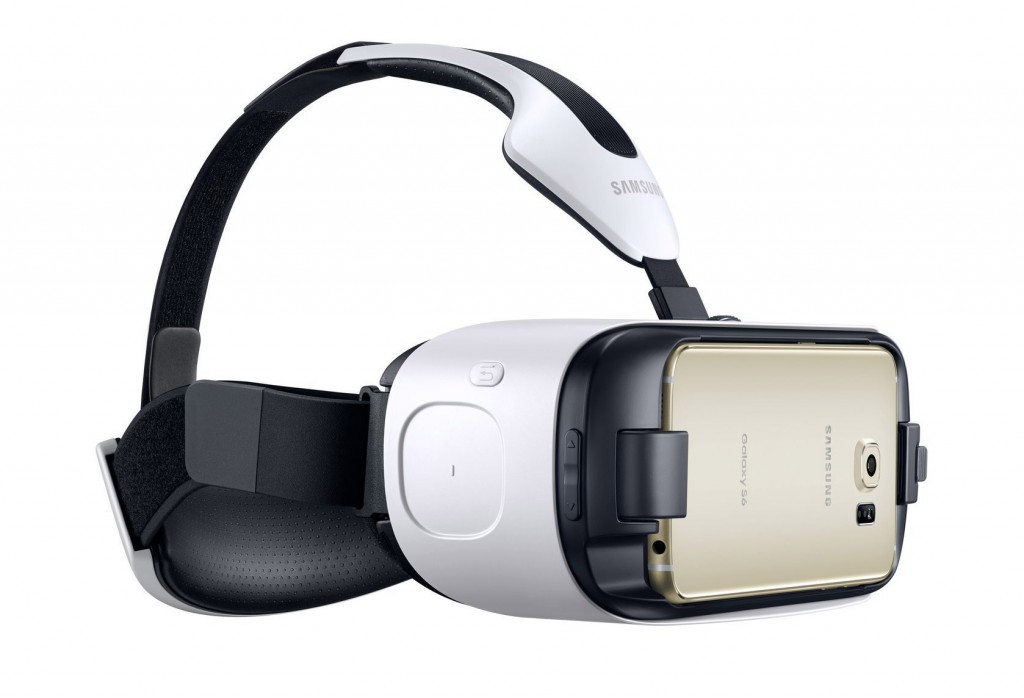
The Samsung Gear VR is currently one of the most popular consumer-grade virtual reality headsets because of its low price; the headset itself only costs $100. The phone, of course, is separate, but many Gear VR users already use an S6 device as their personal smartphone.
The Gear VR features a small trackpad and button on the right side of the headset, allowing for limited VR interaction capability.

However, you do get what you pay for. The display’s immersion is only as good as the device powering it, which is usually 60Hz or less, and there are no built-in headphones; you have to plug them into the phone and deal with the headphone wire. Graphics are usually prerendered and not as detailed as tethered VR devices that rely on a PC tower for active rendering.
Google Cardboard is the cheapest of the consumer-level options for virtual reality.
It is essentially a build-it-yourself Gear VR. Like the Gear VR, it is powered entirely by the smartphone, but unlike the VR, it relies the phone’s built-in accelerometer, and there is no headstrap so you have to hold the device up to your eyes while using it. The headset itself is, as the name implies, nothing but a folded cardboard container with a pair of convex lenses inside.
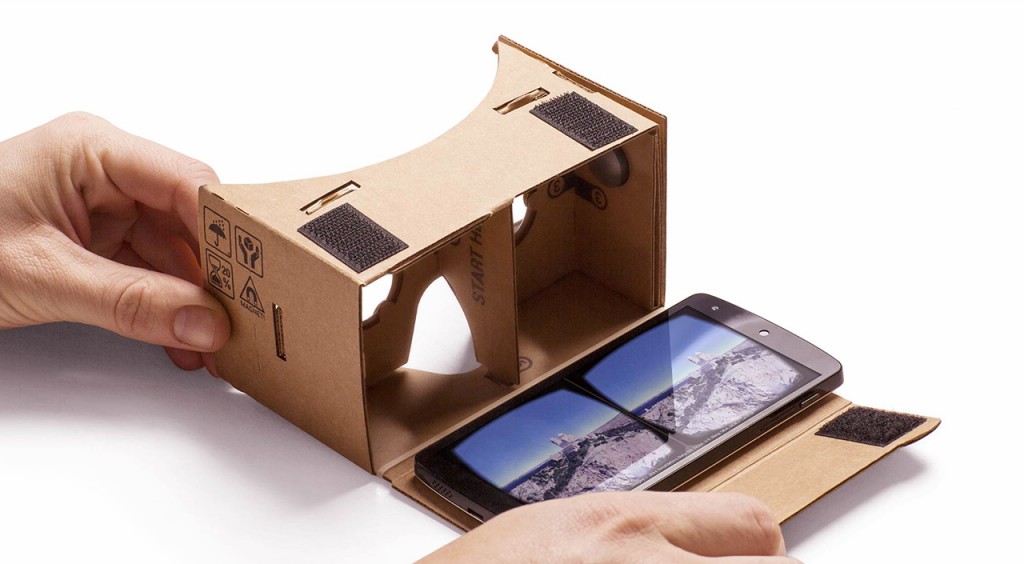
Google Cardboard is easy to make at home, and its website gives instructions on how to find the parts necessary and put them together. There are many manufacturer variations on Google Cardboard that are built in different ways and available for purchase and assembly.
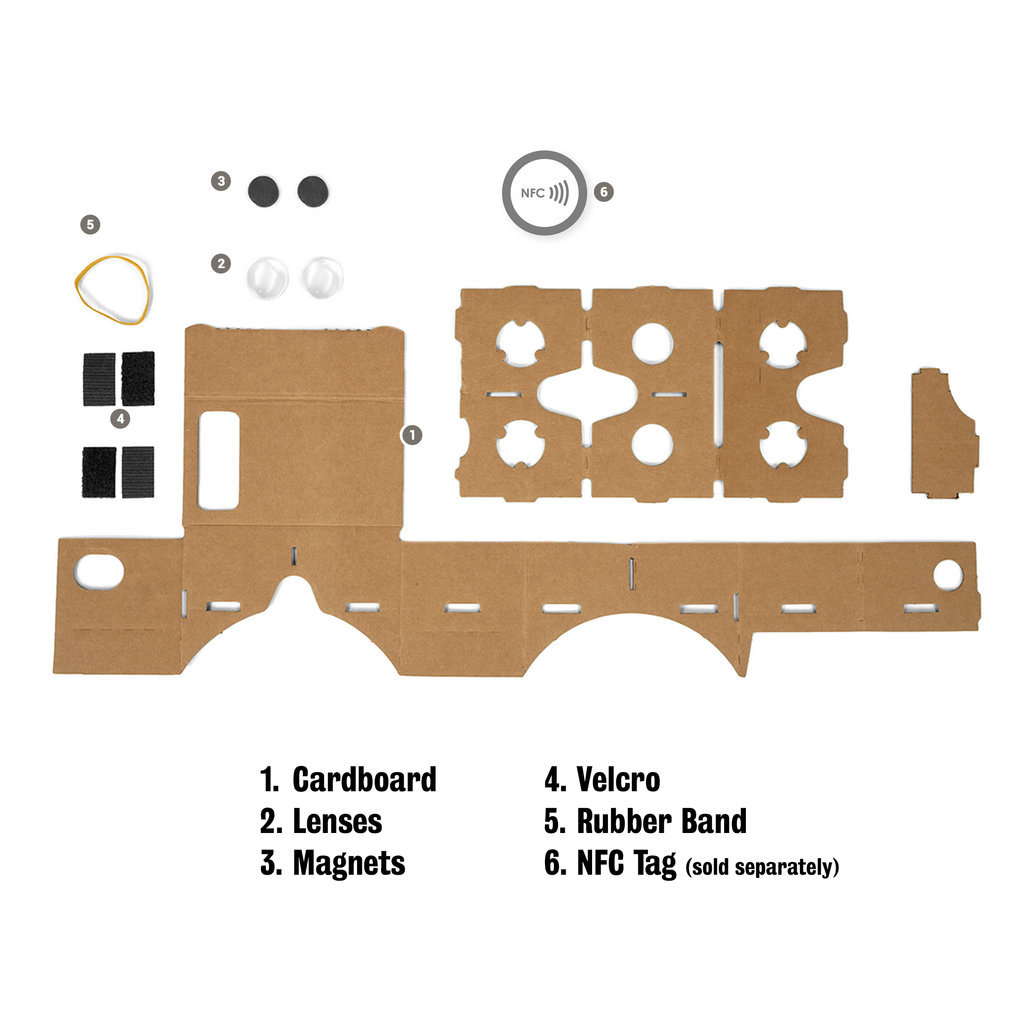
The headset fits any phone up to 6″ and Cardboard apps are available for iOS, Android, and Windows Phone.
The HTC Vive, announced in March 2015, is a virtual reality headset being developed in partnership between HTC and Valve. The device is part of Valve’s larger effort to expand the Steam platform into more areas – including other projects such as the Steam Controller, Steam Link, Steam Machines, and SteamOS, all part of the Steam Universe.
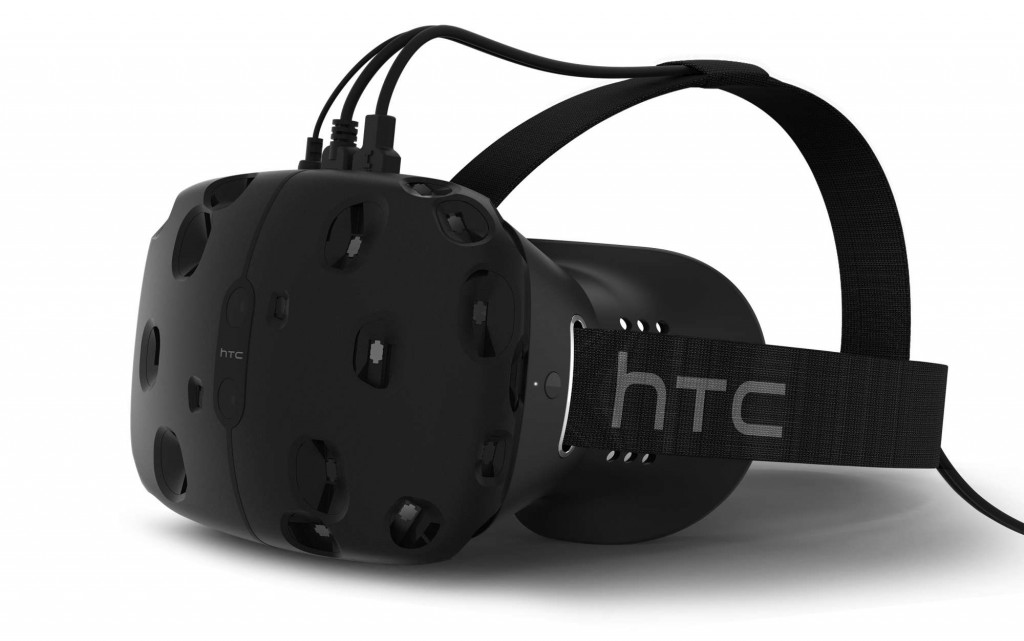
The headset is tethered to a base known as the Lighthouse, but it is still meant to be moved around in. The device contains more than 70 sensors including a MEMS gyroscope, accelerometer and laser position sensors. The headset comes with two Lighthouse towers that emit lasers to map out the room in accordance with the headset’s front cameras. The cameras also track static and moving objects in front of the user, allowing the device to warn the user of hitting an obstacle, like a wall.
Valve has released SteamVR APIs to everyone under the label OpenVR, allowing developers to create virtual reality environments with or without the use of Steam.
The Vive Developer Edition is available now for free for certain developers, and it comes with SteamVR Controllers, a pair of one-handed controllers similar to the Oculus Touch, but based off of the concave trackpads of the Steam Controller. No word yet on a Consumer Edition.
Microsoft’s HoloLens platform is a little different from the other virtual reality headsets we’ve seen; it’s more like Google Glass than the Oculus Rift. Instead of showing you a completely different world, the HoloLens captures the setting around you and superimposes ‘holograms,’ in a sort of ‘mixed reality.’ You still see what’s in front of you, but you can see and interact with non-real figures as if it’s all right in front of you.
[youtube width=”640″ height=”360″]https://www.youtube.com/watch?v=aThCr0PsyuA[/youtube]
Users can interact with the holograms through eye movements, voice commands, and hand gestures. The device uses an array of video cameras and microphones, an inertial measurement unit (IMU), an accelerometer, a gyroscope, and a magnetometer. A ‘light engine’ sits atop the lenses and projects light into a diffractive element that then reflects into the user’s eyes, creating the illusion of holograms.

The most impressive part of the HoloLens is its integration. The device needs no wires nor external processing power. It is completely untethered, allowing the user to move freely through their environment. The headset houses the battery and all of the processor systems inside. It contains a holographic processing unit (HPU) that takes in the information from the environmental sensors and creates the holographs. The holographic display is presented with an optical projection system.
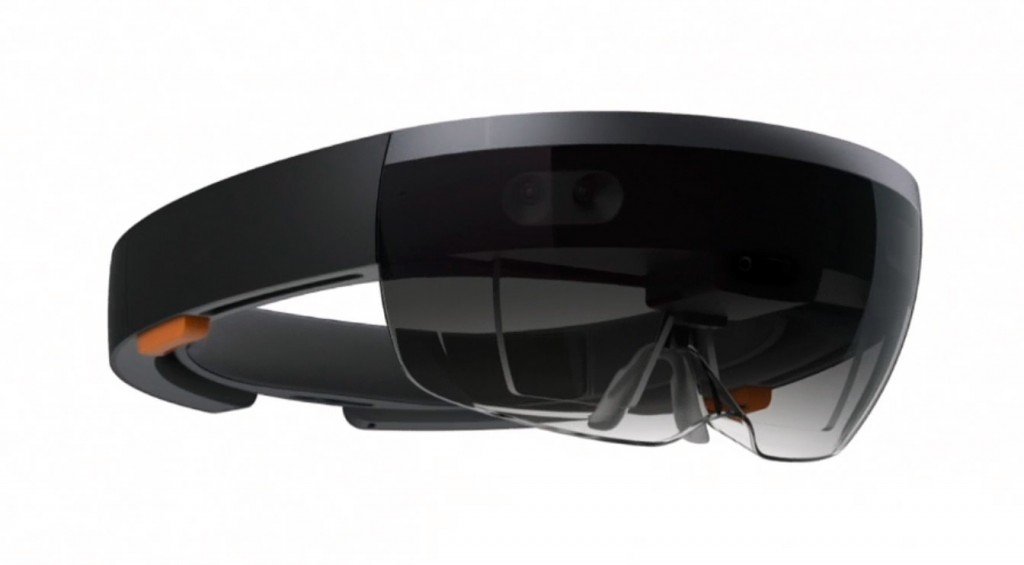
The Development Edition will begin shipping in Q1 2016 and will cost $3000. There is no word yet of a consumer edition.